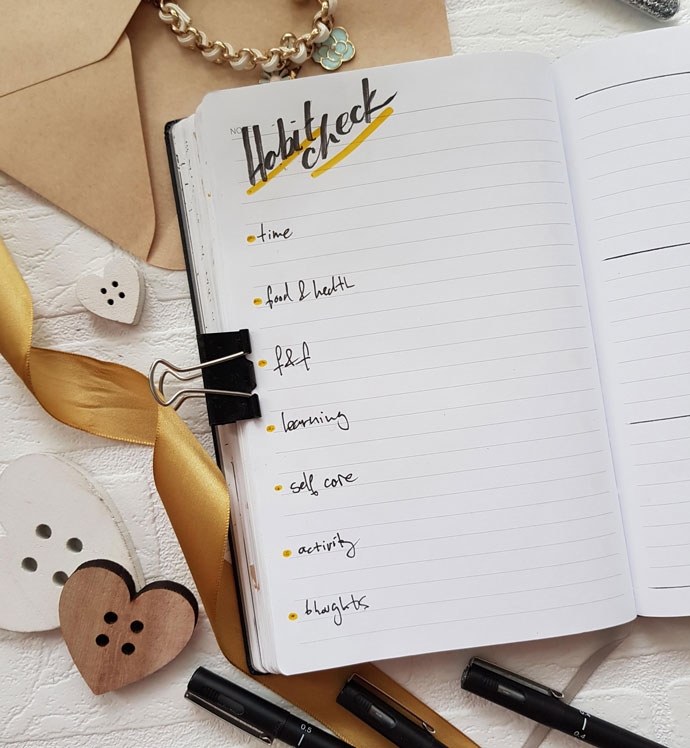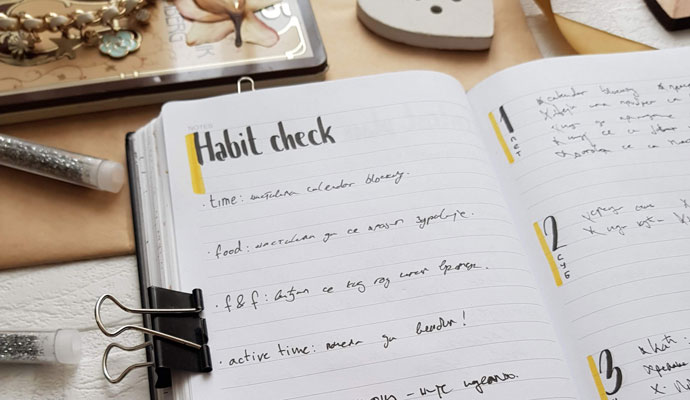Raise your hand if you can’t keep up with the standard bullet journal tracker.
The idea behind it is good, it really is, but if you can’t complete it, you’ll probably end up feeling like you’re not doing enough. At least I felt that way when I made my first bullet journal. I followed the basic method created by Ryder Carroll, then I added some things that I found on Pinterest, and one of them was a standard grid tracker where I added some habits that I want to review and improve.
For a few days, everything was OK, I checked some boxes here and there and after 10 or more days, I couldn’t keep up. At the end of the month most of the tacker ended up staying blank and unused. I tried it again for a few months, I added some interesting layouts and the rest of the story stays the same – it doesn’t work for me.
Maybe it’s just a personal preference, but I like to write out what happened instead of ticking checkboxes or doing something similar every day. So, after a few months of not using any type of habit tracker, I made my version, because I wanted to make some changes in my current lifestyle.
What Is It?
This habit check is made to be something that’s easy to commit to. If you prefer to write some short sentences about one specific topic, it’s perfect. At the beginning of the month I always dedicate one page for my habit check, and there I add some topics that I want to track. They can be anything that you need, from small daily habits to bigger lifestyle choices.
Topics and habits that I frequently track are:
- Time management
- Friends & family time
- Food & health
- Learning
- Active time
- Self care
- Thoughts for the end of the month.
If I find something that needs some intervention (caffeine consumption for example) I’ll add it to my list and see what’s happening, how can I improve it.

How It Works?
After the first half of the month (or less) I’ll write out what happened to every single habit or lifestyle change that I want to improve.
For example: I want to have an active lifestyle because my current one is the total opposite of that. I’ll add a bullet point for my activity in that Habit Check and when the mid-month time comes, I’ll review that habit in a sentence or two: Was I active or not? What’s new? Is there anything that I can improve?
The first half of the month is covered, and I’ll be more aware of some things that I can improve from now on.
At the end of the month, I’ll go back and see if I made some good changes. I’ll write down what happened and then I can make a quick conclusion and see what requires more attention in the future.
What I’ve Learned From This Layout?
The first thing that I’ve learned is that I prefer to write. I find it soothing and it’s easier for me to see what I really want. I love to write some in-detail pages for certain topics, but here, two or three sentences are more than enough for me to find the conclusion and see what’s possible for me to change or improve.
If you’re the type of person that likes to journal, express your thoughts on a piece of paper, then this option might be good for you.
I also found out that I’m suuuper forgetful and sometimes… lazy? That’s why standard trackers don’t work for me.
If they work for you, that’s perfect! You don’t have to change a thing, because you found your best way already. As long as you get the benefits from using it, don’t change it.
What do YOU think about this approach?
